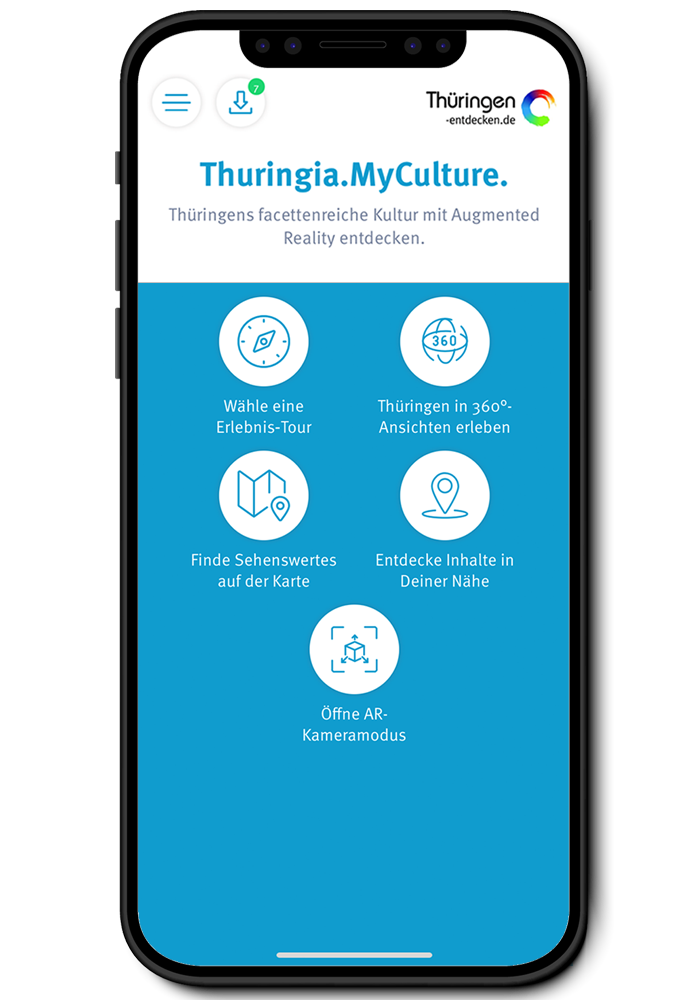Visit the state capital Erfurt and go on a virtual discovery tour through Thuringia.
Likenesses
Speaking in colours
In Thuringia, Cranach’s paintings still resonate with audiences today, engaging them in a lively dialogue of colour and pattern, giving worlds new meaning through the language of art. Above all, their style speaks of a time in which a new era was beginning!
Solving the mysteries hidden in the canvas
When interpreting paintings, you may think differences of opinion are inevitable. But not always. Paintings not only present an image, they bring their subject to life and give people a deeper understanding of it. Like when solving a mystery, you have to fit the pieces of the puzzle together. People see things differently – and paintings are no exception.
In the early 16th century, pictures were a common means of communication, as reading was reserved for the elite. What’s more, messages of this type circulated more quickly. 500 years on, not much has changed. We still like to watch. Whether it’s advertising, films, exhibitions or museums, pictures continue to have an enormous appeal.
As the saying goes, a picture is worth a thousand words.
Monumental paintings
The Sixtina of the North in Bad Frankenhausen
Unearthing secrets
What message did the artist want to convey? Thanks to modern technology, we can now answer this question and resolve some of the mysteries surrounding Cranach. Sophisticated techniques are required to get to grips with the master. Researchers use state-of-the-art infrared cameras to quite literally illuminate the painting. Reflectography is used to detect sketches or outlines on the wood, which give more accurate conclusions about the original artist. But don’t we always know who painted it? Not always it seems. In the case of some valuable paintings, art historians are still puzzling over who the artist was. Lucas Cranach the Elder? Or maybe one of his sons?
Back again in Gotha!
The Return of the Lost Masterpieces
The power of pictures
Have you seen the Luther Bible at the Duchess Anna Amalia Library? Have you looked in detail at the illustrations inside? They were also the work of Cranach – or, rather, his workshop. These pictures played no small part in the success of Luther’s version of New Testament. In the three years following its initial publication, it was reprinted no fewer than 42 times.
A complete edition comprising the Old and New Testament came 13 years later, this time featuring a total of 117 woodcuts. A special edition of this Luther Bible dating from 1534 has been preserved in Weimar. After printing, it was enhanced with colour and embellished with gold. In 2015, this copy was included in UNESCO’s Memory of the World Register together with other writings by Martin Luther.
Take a look at the Luther Bible here.
Cranach’s Deluge of Paintings (’Cranachs Bilderfluten’)
An exibition of the Weimar Klassik Stiftung Foundation
Cranach became the painter of the Reformation, not least because of his friendship with Martin Luther. Our image of Luther was certainly influenced by the fact that Cranach often painted the reformer and his wife for propaganda purposes (Luther, a former monk, and Katharina von Bora, a nun who had fled the convent, together a married couple). Cranach made Luther the icon of the Reformation.
Martin Luther’s achievements in the field of language are comparable with Cranach’s in the arena of art. Cranach brought prominence to the leading lights of the Reformation and embellished their writings with his illustrations. Thanks to his workshop, he was able to make large quantities of prints and distribute them quickly. Cranach’s paintings epitomise the Reformation. He was, so to speak, the marketing department for the Reformation.
Traces of Cranach in Thuringia
Cranach in Thuringia
A passion for art
Further information on the life and work of the Cranachs.
Title: ©Jessica Mintelowsky, Thüringer Tourismus GmbH
Noch mehr Welt übersetzen ...





















